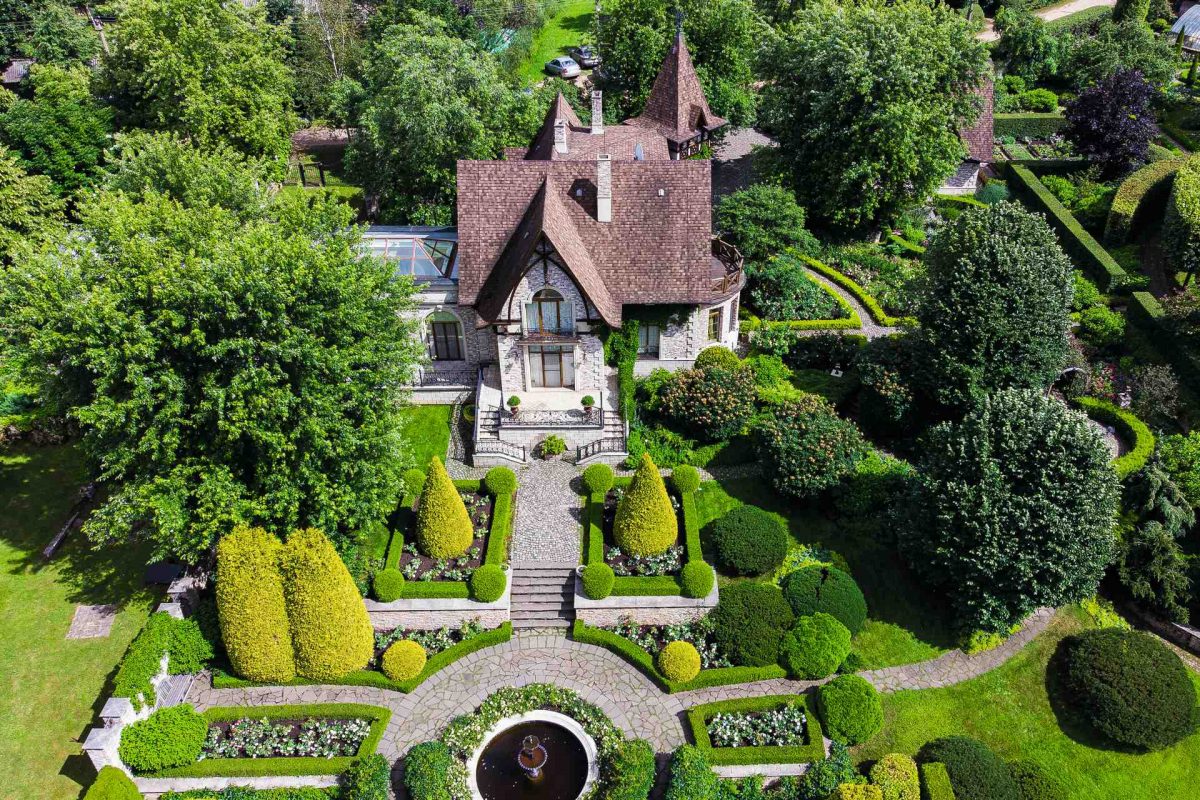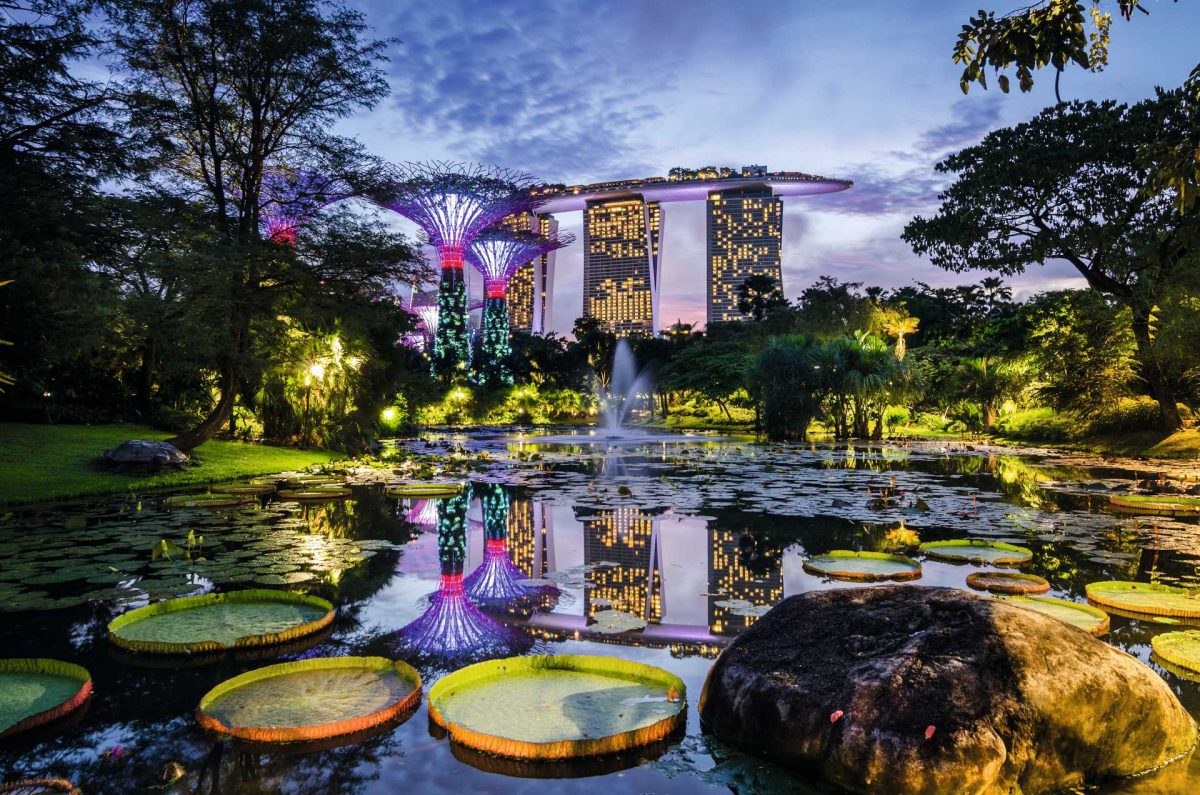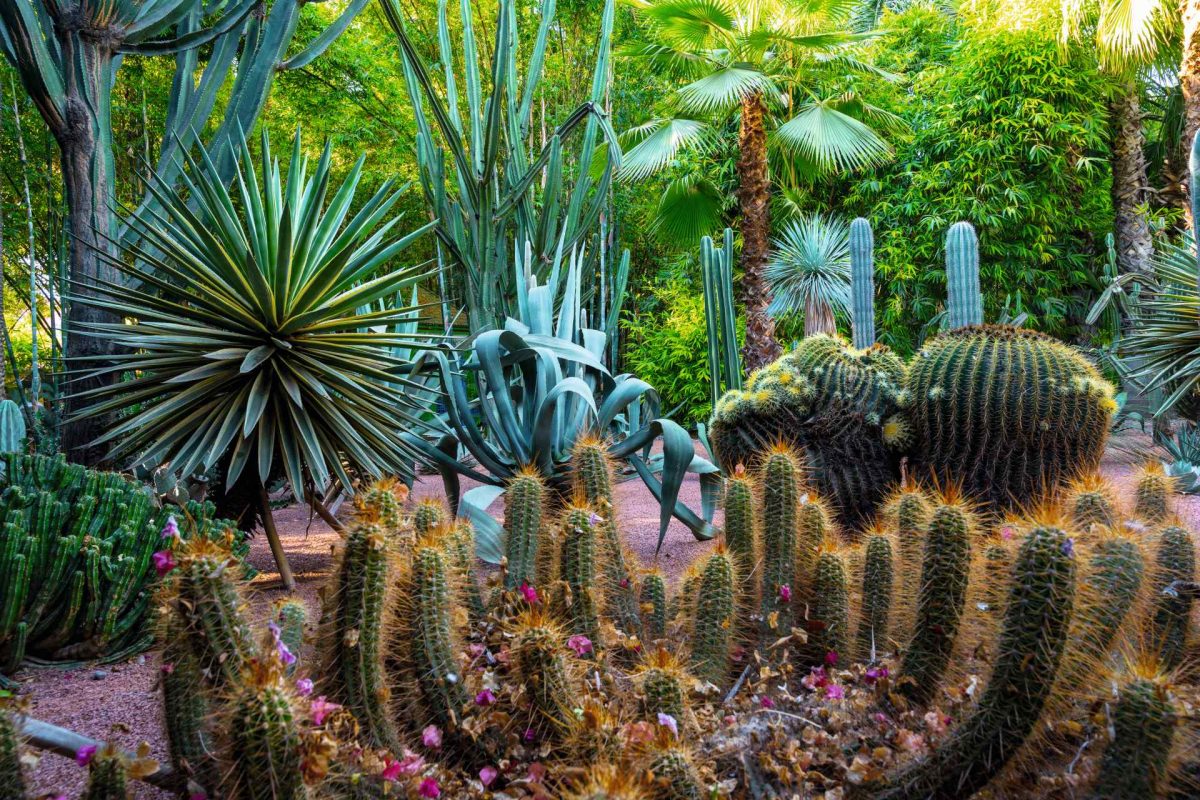No, it is not in the wildness of pristine nature but in the human-ordered spaces of gardens and parks that the triumphant spring shows itself in all its glory. We’ve chosen five places where everyone will find their own Eden.
Orekhovno Estate Park
Pskov Region, Russia
The lush park near the Pskov village of Orekhovno, spread over 5 ha, is considered to be almost the only European garden in our country, laid out according to all standards. Although it, like the Norman-style manor house itself, is in private hands, it is open to the public but only during the warm season: from May 1 to October 31. The owner of the park, landscape architect Alexander Grivko, dedicated it to his mother, who instilled in him a passion for botany. Elements of Italian Renaissance garden, English landscape park, and Russian manor park — Orekhovno was originally conceived as a tribute to the park culture of manors itself. Tidy paths and a labyrinth, a bridge over a sleepy river and a panoramic gazebo, terraces and greenhouses, and, finally, the uninterrupted blossoming of various ” Flora’s gifts” — not surprisingly, themed photo shoots are so often taken here.

Changdeokgung Palace and Secret Garden
Seoul, South Korea
Dating back to the 15th century, Seoul’s Changdeokgung, or Palace of Prospering Virtue, is one of the five grand palaces of the Joseon era, the former summer residence of the king, and a UNESCO World Heritage Site. It is famous not only for its architecture — elegant residential buildings, ceremonial halls, gates, and pavilions — but also for its vast gardens spread over dozens of hectares. The jewel of the complex is the Huwon Secret Garden, where members of the royal family enjoyed relaxing, strolling, afternoon reading, and archery practice. Many of the trees here are several hundred years old! It is also interesting to walk along Ongnyucheon, “Jade Stream,” which flows through the park: this is the name of the channel bending in the shape of the Latin letter U, along which once used to launch paper cups with hot drinks.

Quinta da Regaleira Palace and Park Ensemble
Sintra, Portugal
A favorite summer vacation spot for Portuguese kings who pine for the Lisbon heat, Sintra boasts a special microclimate. Thanks to the neighboring mountains, its location near the Atlantic Ocean, and its surroundings of dormant eucalyptus forests, it is always cool and there are often fogs that envelop the emerald hills and the palaces that crown them. There are several of them — for instance, medieval, romantic Disney-like Pena National Palace, openwork Monserrate Palace, as well as austere Moorish Castle. But the most intriguing of all is the Manuelino-style Quinta da Regaleira Palace and especially the multi-level park surrounding it, where 4 ha are scattered with secret symbols and mystical ciphers referring to the Freemasons, Templars, and Rosencreucers and known only to the insiders. The park includes a wild-like forest and an already combed garden, with grottos, ponds, and gazebos.

Gardens by the Bay
Singapore
For many, Singapore is just a crossroads, a transit point for further travel in Southeast Asia. Still, if possible, stay here for a couple days. In terms of urbanity, there are few places in the world that could be more interesting. The mind-boggling 101 ha of Gardens by the Bay, which has become one of the country’s most recognizable landmarks, is a perfect example of such a place.

Gardens by the Bay consists of three parts — Bay South, Bay East, and Bay Central. They, in turn, include an embankment and promenades, a Flower Dome greenhouse complex and conservatories with different climatic zones, a pavilion of multi-level “cloud forest” with “floating” staircases and an artificial waterfall. Probably the main and most photogenic symbol of the garden is the Supertree Grove. These trees store solar energy, collect rainwater for later use, and capture wind, redirecting it to the air conditioning system. Two of these giant trees are connected by a trail — it’s a great viewing platform.
Majorelle Garden
Marrakech, Morocco
The park is named in honor of French orientalist painter and amateur botanist Jacques Majorelle. He first visited Marrakech in 1919 when he was being treated for tuberculosis. Majorelle traveled almost the entire territory of Morocco, making sketches on subjects from everyday life, and then settled in Marrakech, where, among other things, for decades he organized the garden in his own taste. Apparently, Jacques liked cacti best of all. In addition to these, the park has geraniums, bougainvilleas, palms, yuccas, philodendrons, geraniums, and there is even a bamboo alley. The eclectic park with its lush vegetation and brightly colored Moorish and Art Deco buildings, fountains, and pavilions was appreciated by Winston Churchill, a great admirer of Marrakech, and after Jacques Majorelle’s death, it was bought by fashion designer Yves Saint Laurent and entrepreneur Pierre Bergé, who created a foundation to maintain this beautiful creation and preserve it for future times.

Photo: shutterstock.com


